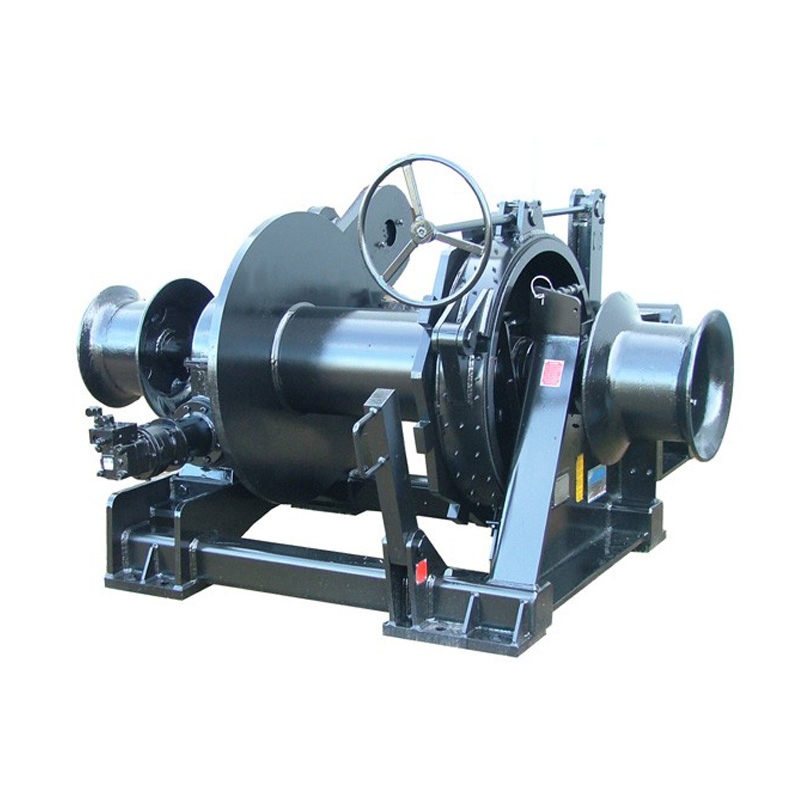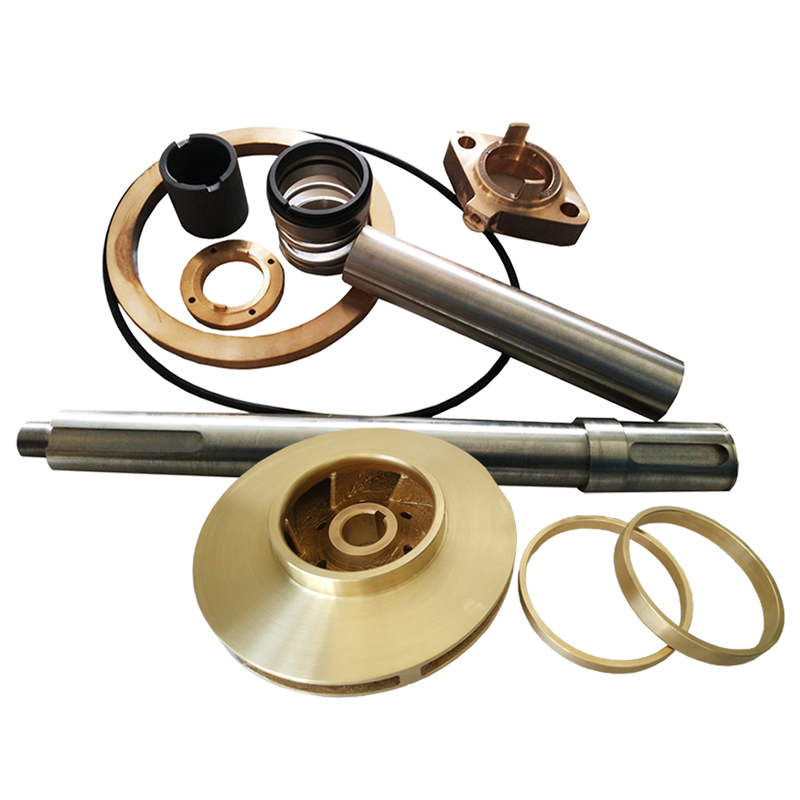Image by Michal Jarmoluk via Pixabay
When we talk about sustainability and what needs to be undertaken to combat climate change, the focus naturally centered on carbon emissions. But that is not the only facet of the environment that enterprises awareness. Water is equally important as one of the planet's most essential resources. Piston Bush Rod Supplier

Unfortunately, climate change impacts the amount of water available for human consumption, making access to this vital resource more difficult and unbalanced. This is why there is a close link between water stress and climate change. Clean water is an essential resource for human health, agriculture, energy production, transport and nature. But it is also under multiple pressures.
When we talk about water and sustainability, two facets must be considered. The first is the footprint organizations leave on the environment, and the second is environmental risks placed on a company's operations or business continuity. For example, food and beverage companies rely on water from their local environment to drive their production.
Suppose an organization produces in a region under water stress. In that case, it may face a scarcity of water or pressure from the local community regarding its ability to draw the water required from the local water resource. So how much water the organization uses and how efficiently it’s used can directly impact the business operations and the continuity of its manufacturing process. In addition to operations, any negative impact on the local water situation, such as scarcity or pollution, could damage the company’s reputation.
A Local Problem That Requires Local Solutions
It must also be remembered that there is one crucial difference between carbon and water. Carbon emissions have a global impact, so they can be approached with global decision-making processes. When it comes to water, this is very much a local issue with local problems and consequences. That means, from a corporate perspective, making one decision that applies to all global facilities is difficult because every facility has its unique situation. Some facilities may be exposed to the risk of flooding or rising seawater, some may suffer from drought and in other regions and water quality could be poor because of pollution.
The Three Stages of Water Use
When developing a strategy for improving water usage there are several stages of the water lifecycle to consider—intake, consumption and discharge. In water shortage areas, water intake is a problem because there is only so much fresh, usable water within a specific period within a particular location.
After all, water is local and time-sensitive, because of this, many food and beverage manufacturers do not rely on municipal water as the primary source; they take from wells, lakes and fresh water.
When large volumes of water are withdrawn from these sources, they become less available for the other stakeholders in the community. Intake very often can be capped by local regulations if you’re operating in water-stressed areas. Or in the least you will create community pressure on your operations if you take too much.
Water used in a facility is discharged either back into the water stream, if it has been cleaned sufficiently, or into a waste stream, if it does not meet regulatory requirements. For example, if it is discharged to a third-party wastewater treatment plant, you are discharging something that is not reusable. But if the water is treated within the facility to a permissible level of quality, it could be discharged to the source or to the ground and becomes circular.
This brings us to methodologies to calculate water usage. You could count the total volume flown through all the processes, or you can measure the net consumption. Net consumption is the difference between your intake and discharge. The difference between these two numbers is how often you recycle the water from your plant. If you can recycle and reuse, you are becoming much more efficient.
One of the most significant data gaps is due to people not measuring and tracking water, their water consumption and discharge—they do not turn data related to water into a metric. When you ask the company how much water it’s drawing from all sources or how much it discharges, the company often can’t answer this. This information is becoming more critical as it’s increasingly required for environmental, social and governance (ESG) reporting. Without access to this information, it’s difficult to explain your environmental practices.
Second, manufacturers cannot create metrics that measure how efficiently they use water and mitigate water-related risks without this information. The manufacturing sector has developed metrics for most other efficiency categories, such as production yield, production efficiencies and energy usage. Still, so far, water is generally not treated in this way. With the increased attention on energy use, many manufacturers can report their energy use down to a granular level, such as how much power is consumed per production unit.
Circularity is another vital water metric. It is essential to understand how often the water that enters a facility is utilized. To do that requires more data and analytic tools to track because you would have to follow the water flow in different locations, piece together data that may come from various equipment, devices or meters and build a complete picture rather than an isolated picture. As always, data is the starting point to making better water-related decisions.
The current report usually takes place at the plant level. Manufacturers collect high-level data of the total plant level water use, then divide it by the total production of the month to obtain a very general water use metric. Progressive companies may have calculated that to report sustainability and disclosures. But those metrics cannot be the driver for any improvements because it does not understand which process uses more water and how it changes over time.
In the food and beverage sector, water goes directly into the products and gets shipped out of the local region. Water is also used to drive different processes or chemical reactions. So, when you do not understand the water metrics or performance of the individual process, it is harder to act. Ensuring that you have collected, cleaned and analyzed data will provide the granularity of metrics required to improve processes and environmental performance.
You may not get to all the detail, but if you get to 80% of your total water tracked, where it comes from and how it relates to production intensity, that would be a good start to utilizing and understanding your facility’s water impact and efficiency.
In a recent project with AB InBev, Atomiton demonstrated the value of data by using AI-based predictive analytics to improve water use efficiency. An example market for this technology is beer production; making beer is very water intensive, both as part of the finished product and within the manufacturing process. The industry average is between 2.3 to 5.3 L. of water used for every liter of beer produced. AB InBev is already at the lower end, but the company’s commitment to water conservation means it wants to understand its water use and further improve that figure.
At the AB InBev brewery in Guarulhos, Brazil, Atomiton is helping reduce water consumption in bottle washing, which is one of the primary consumers of the resource. By looking into the scale of any reduction in water use for washing, the company realized the scale of the impact it could make.
By turning real-time bottle washing machine data into water metrics, the Atomtion system makes dynamic recommendations on how to reduce the use of water in the nozzles and tanks. Atomiton tracked a reduction of 18.5 in the nozzle water, 22% in tank water and 25% in rejection. The potential for savings is enormous as the company, in 2021, produced 581 million hectoliters of beer. From the scale perspective, all the international breweries use 32 billion glass bottles annually. Atomiton's KPIs estimate that it can reduce about 2.5 million cubic meters of water. The system also provides operators with insights on how they should operate machines in a more water-efficient way. In time, the aim is to take those actions and apply them in automatic processes.
The AB InBev example is only the beginning. The project looked at how much water was used for every bottle cleaned. Unfortunately, this kind of water intensity metric is scarce in manufacturing. There is some raw data available, but it’s not measured. The success enjoyed by AB InBev however, is a compelling example of the power of using data effectively. It is impossible to improve and increase awareness when you do not metricize and measure. Data can enhance water usage however, benefiting the environment, improving performance and profitability and allowing manufacturers to meet tight regulations around water use.
Jane Ren, CEO and founder, is an experienced cross-industry innovator, Jane drives products and markets for Atomiton. Before founding Atomiton, Jane was the Chief Business Architect at GE Global Software, where she led product management of the Industrial Internet Platform (Predix) and spearheaded software-enabled business transformations across GE’s Transportation, Aviation, Energy and Healthcare businesses. Previously, Jane was responsible for market strategies at Cisco, Sutter Health, and Intel Digital Health. Jane is a medical doctor by training and has published in international renowned medical journals.
You must have JavaScript enabled to enjoy a limited number of articles over the next 30 days.
Sponsored Content is a special paid section where industry companies provide high quality, objective, non-commercial content around topics of interest to the Food Engineering audience. All Sponsored Content is supplied by the advertising company. Interested in participating in our Sponsored Content section? Contact your local rep.
Our session will dive into real-world scenarios and practical examples, demonstrating how effective recipe management and simulation can drive innovation and efficiency in your enterprise.
For webinar sponsorship information, visit www.bnpevents.com/webinars or email webinars@bnpmedia.com.
Combining scientific depth with practical usefulness, this book serves as a tool for graduate students as well as practicing food engineers, technologists and researchers looking for the latest information on transformation and preservation processes as well as process control and plant hygiene topics.
Copyright ©2023. All Rights Reserved BNP Media.

Purifler Design, CMS, Hosting & Web Development :: ePublishing